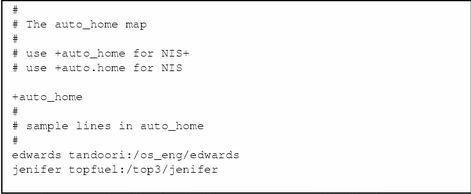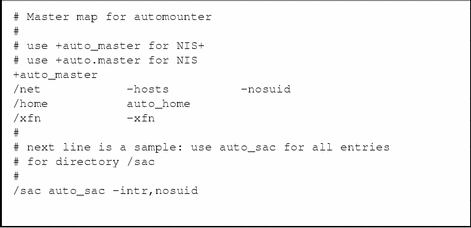Browsing NFS Automount Maps
In addition to browsing NFS servers, Solstice NFS Client lets you browse NFS automount maps. The maps can be either NIS/NIS+ automount maps, or local automount maps. These maps contain information about other computers on your network.
The Solstice NFS Client Automounter is an NFS automounter. It enables administrators to define mount points without regard to their actual location on a network. Automount maps provide the links between file system names and their actual locations. For example, a file system name of /dat/pcapps could map to a network location of appserver:/export/pcapps. This location could change with a simple update to the automount maps.
The Solstice NFS Client automount maps use the same format as the NIS/NIS+ automount maps in Solaris. The Solstice NFS Client installation program installs two required automount maps in the C:\Program Files\Solstice\Etc directory, auto_home and auto_master. These files must reside in this directory whether you use a local name service or NIS/NIS+. Figure 3-9 and Figure 3-8 show slightly modified versions of these two files. For more information on the format of these files, see the UNIX man page for automount (enter man automount on a Solaris workstation command line), and consult the Solaris system administration documentation.
You can view NIS/NIS+ maps on a Solaris machine by entering:
ypcat -k auto.home |
or
niscat auto_home |
If your network does not use NIS or NIS+, your computer will use the locally installed automount maps. These files must reside in your C:\Program Files\Solstice\Etc directory.
Home Automount Map
The auto_home file requires an entry for each user. To edit the automount maps, use a 32-bit editor (like WordPad) to prevent Windows from converting the file names to 8.3 DOS names.
Figure 3-8 A Home Automount Map

Master Automount Map
The auto_master file is read only at startup so you must reboot after editing it. However, the auto_home file is read as "needed" so it does not require a reboot after editing.
Figure 3-9 A Master Automount Map

- © 2010, Oracle Corporation and/or its affiliates
